
A-100 Grazer Alfalfa
Medicago sativa var. A-100
A-100 Grazer Alfalfa by Star Seed is an exceptionally high yielding and high quality alfalfa that will withstand grazing compaction and high traffic. Product Tech Sheet Related ProductsSlingshot Alfalfa Exclusive genetics with sunken crowns developed with Star Seed breeding partner A-100 Grazer Brand has an excellent agronomic package that provides a very persistent and healthy plant Top production on a varying soil types Fast recovery after cutting Excellent yield potential Proven yields with high forage quality Subset crown Aphanomyces Race 2 resistance Seeding Rate of 18-22 LBS per acre Seeding Dates of April to Mid-May and August to Early September
- Growing Region: California
- Blooms: Spring
- Life Form: Legume
- Application Type: Agricultural Conservation, Cover Crop
- Height: 1-3 ft
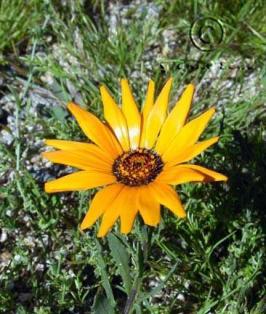
African daisy
Dimorphotheca sinuata
Introduced annual with showy yellow, orange and cream flowers, blooming early spring and summer. Recommended for beautiful groundcover, garden borders or areas where quick cover is needed. Drought and heat tolerant; full sun. Attracts pollinator species.
- Growing Region: Southwest, California
- Blooms: Spring, Summer
- Life Form: Forb
- Application Type: Agricultural Conservation, Cover Crop, Commercial Beautification
- Height: 0-1 ft
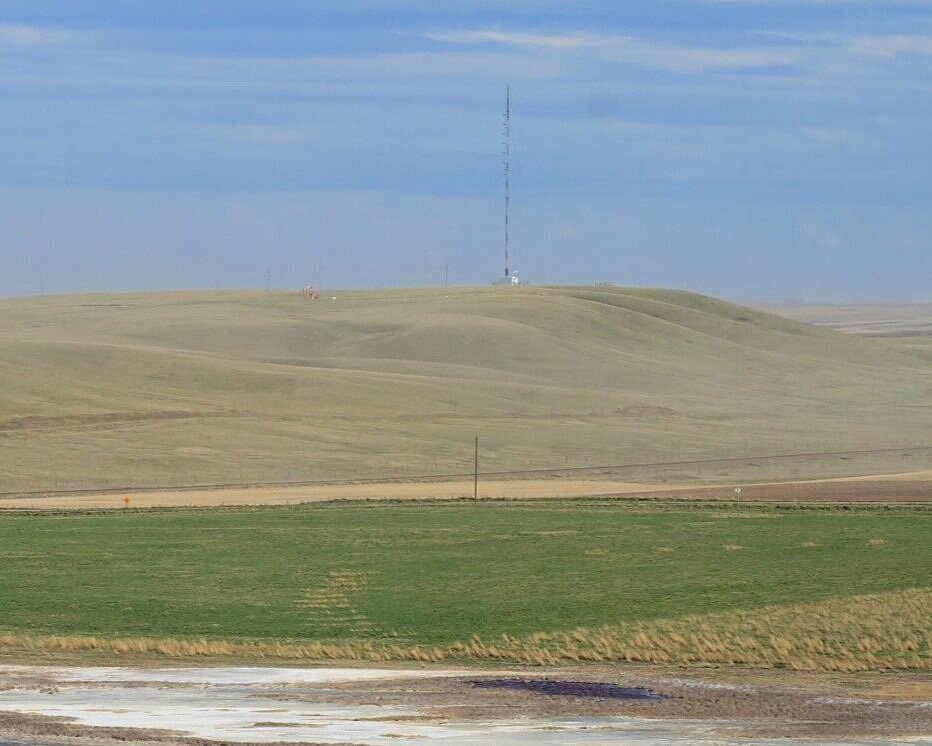
Alkaline Hay & Pasture Blend
n/a
A blend of grass species designed to grow in difficult alkaline soil conditions. Alkaline soils are typically high pH clays (≥ 8.5) with poor particle structure and low capacity for water infiltration and drainage due to the presence of sodium carbonate. Use in either irrigated or dryland applications.
- Growing Region: Pacific Northwest
- Blooms:
- Life Form:
- Application Type: Agricultural Conservation, Forage & Pasture
- Height:

Altai wildrye
Leymus angustus
Formerly Elymus angustus. Robust, Cool season, long-lived, perennial bunchgrass with short creeping rhizomes. Well adapted to loam and clay soils, drought tolerant and extremely salt and alkaline resistant. Excellent winter hardiness. Root system may extend to 14 ft. below the surface, making it useful for soil stabilization. Excellent forage, especially in winter when plants stand above the snow surface available for grazing. Nearly as productive as Tall wheatgrass (Thinopyrum ponticum) on saline soils.
- Growing Region: Pacific Northwest, Intermountain West
- Blooms:
- Life Form: Grass
- Application Type: Agricultural Conservation, Erosion Control, Habitat Restoration, Land Reclamation
- Height: 1-4 ft
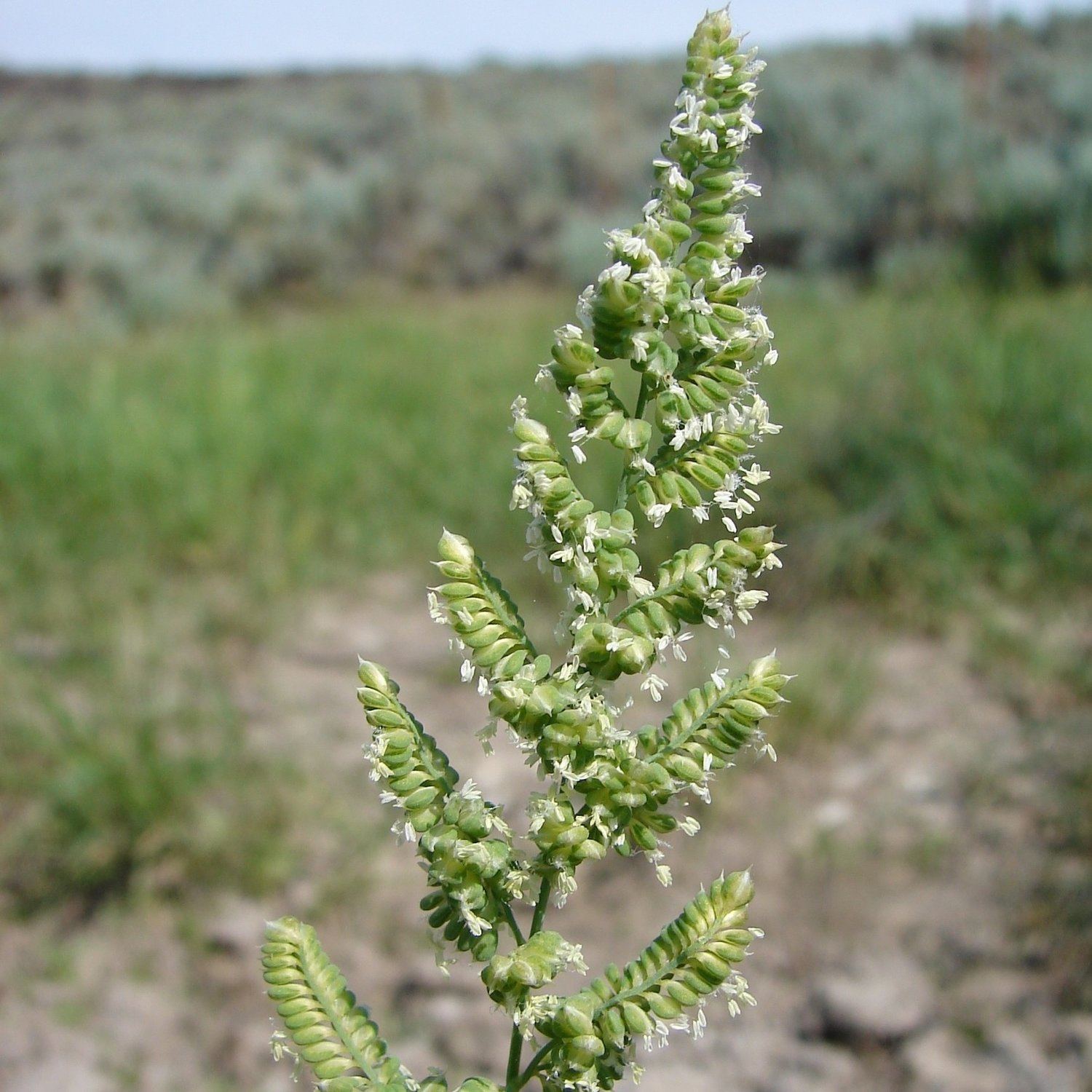
American sloughgrass
Beckmannia syzigachne
Cool season, robust annual or short-lived perennial that may develop short rhizomes. Commonly occurs on wet sites such as ponds, swamps, ditch banks, shallow marshes and sloughs. Prefers clay soils; tolerant of saline soils. Shallow-rooted and able to colonize denuded wetland soils, making it excellent for riparian reclamation. Seeds are eaten by migratory birds. Palatable and frequently used for hay or grazing.
- Growing Region: Pacific Northwest, Intermountain West
- Blooms:
- Life Form: Grass
- Application Type: Agricultural Conservation, Erosion Control, Habitat Restoration, Land Reclamation
- Height: 1-3 ft
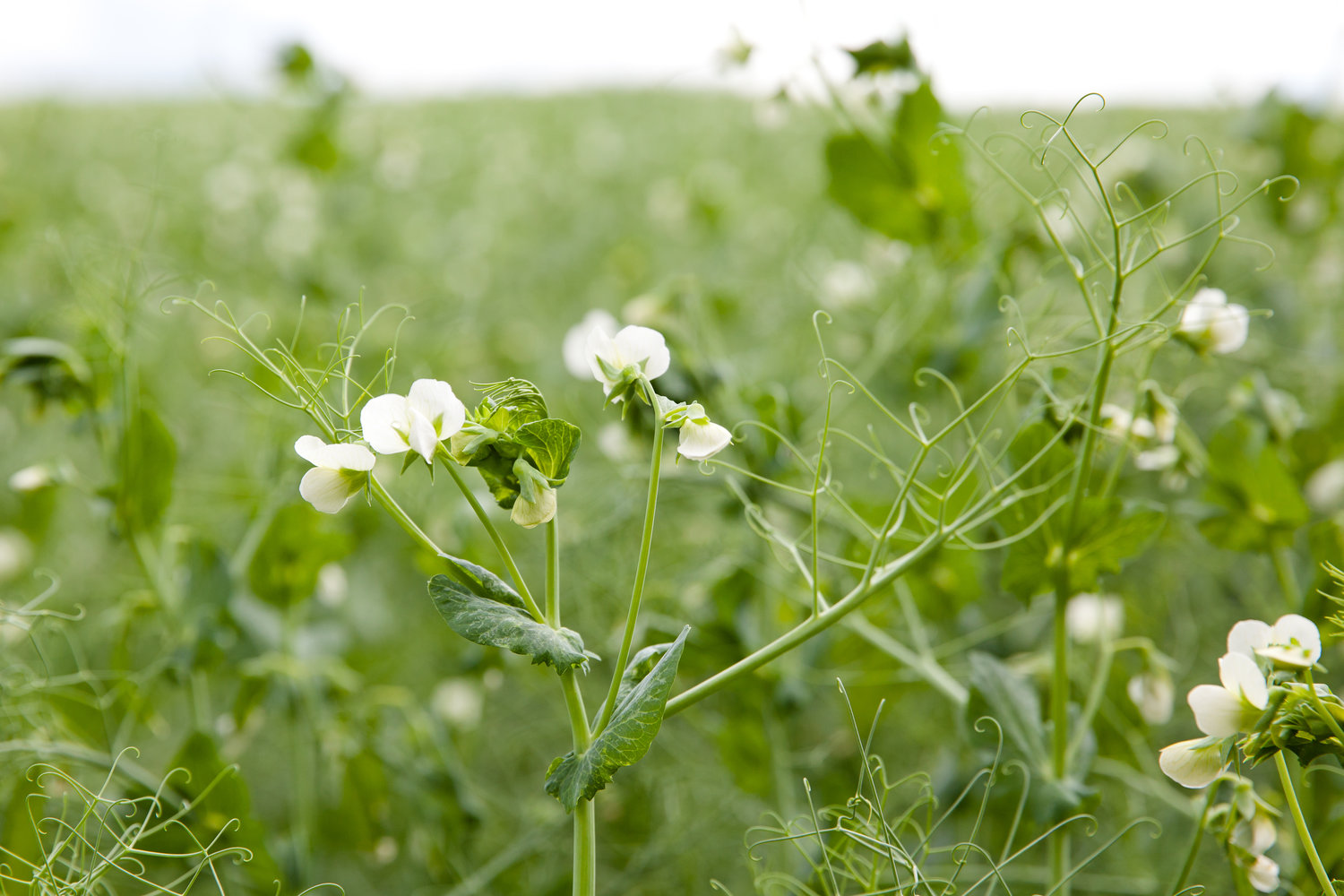
Austrian winter pea
Pisum sativum
This pea species is a Cool-season, annual legume crop that is primarily used for cover crops, winter grazing, and wildlife food plots. Austrian Winter Peas has a low temperature threshold of about 10 degrees. Product Tech Sheet Related ProductsChick MagnetGreen Spring MixGreen Up Mix Low growing vine-like legume Excellent nitrogen fixer Seeding rate of 30-60 LBS/Acre Seeding depth of 1.5 to 2 inches Popular food plot legume Beneficial rotational crop to help reduce disease and other pests Very good green manure cover crop legume Creates habitat for upland birds Good mixer with oats for early spring hay, pasture crop or green manure
- Growing Region: California
- Blooms:
- Life Form: Legume
- Application Type: Agricultural Conservation, Cover Crop
- Height: 1-3 ft
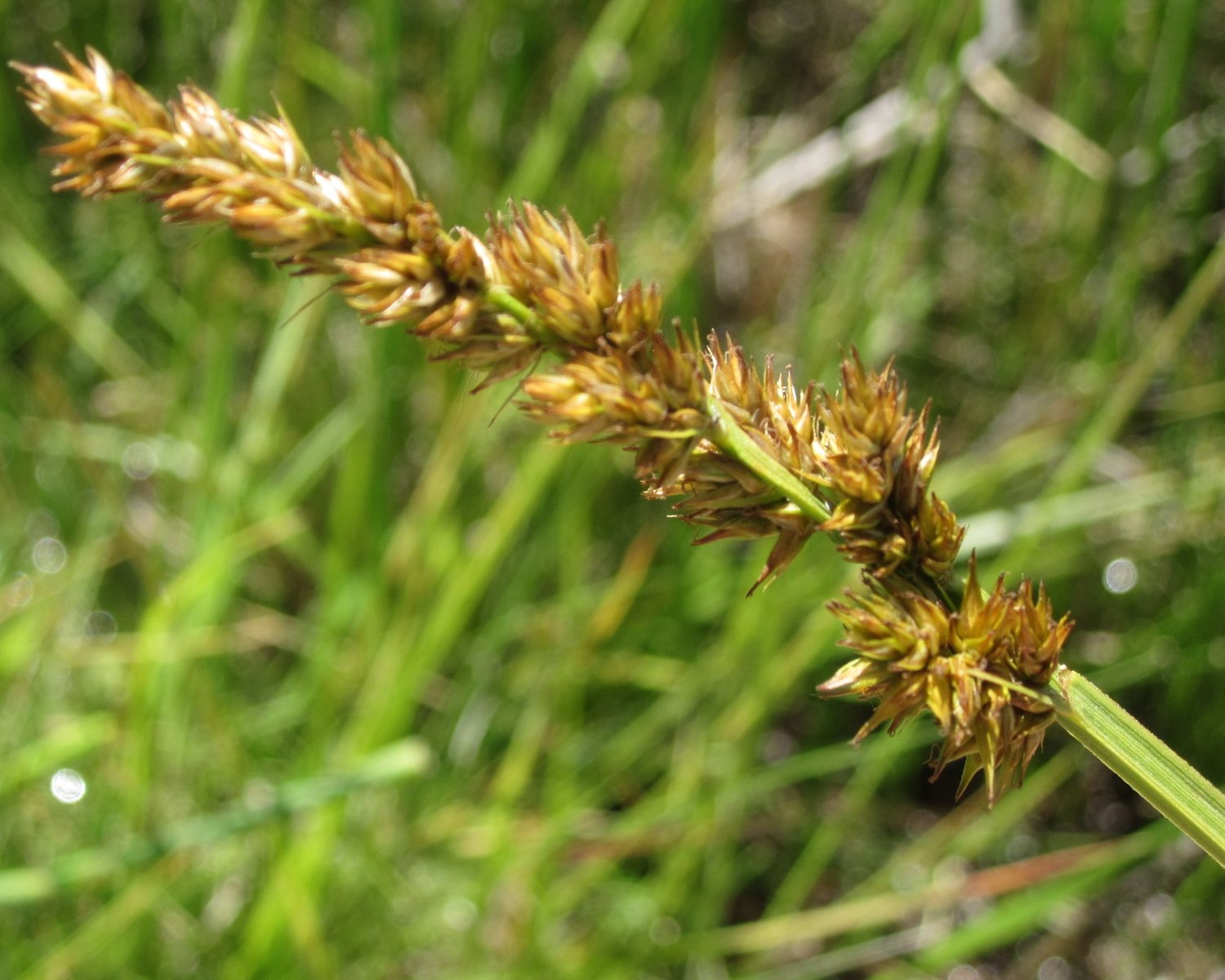
Awlfruit sedge
Carex stipata
Cool season, tall, native perennial grasslike. Grows in dense clumps. Widely distributed across the northern latitudes of the U.S. Adapted to seasonally flooded wetlands, marsh edges and sites with still or slow moving water, usually in full sun. Excellent seed producer; floating seeds are a visible food source for waterfowl. Useful in habitat restoration, wetland projects and detention basins.
- Growing Region: Midwest, Pacific Northwest
- Blooms:
- Life Form: Grass
- Application Type: Agricultural Conservation, Habitat Restoration
- Height: 1-3 ft
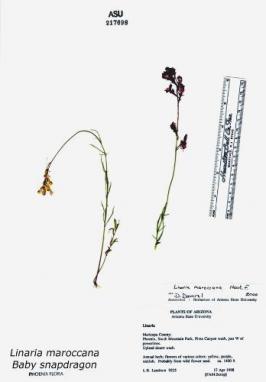
Baby snapdragon
Linaria maroccana
Drought tolerant introduced annual with mixed colors of pink, red, orange, yellow, lavender and white, blooming prolifically from early spring to summer. Widely adaptable and easy to establish. Used for full to part sun ornamental borders and garden mixtures.
- Growing Region: California, Southeast, Midwest
- Blooms: Spring, Summer
- Life Form: Forb
- Application Type: Agricultural Conservation, Cover Crop, Commercial Beautification
- Height: 1-2 ft
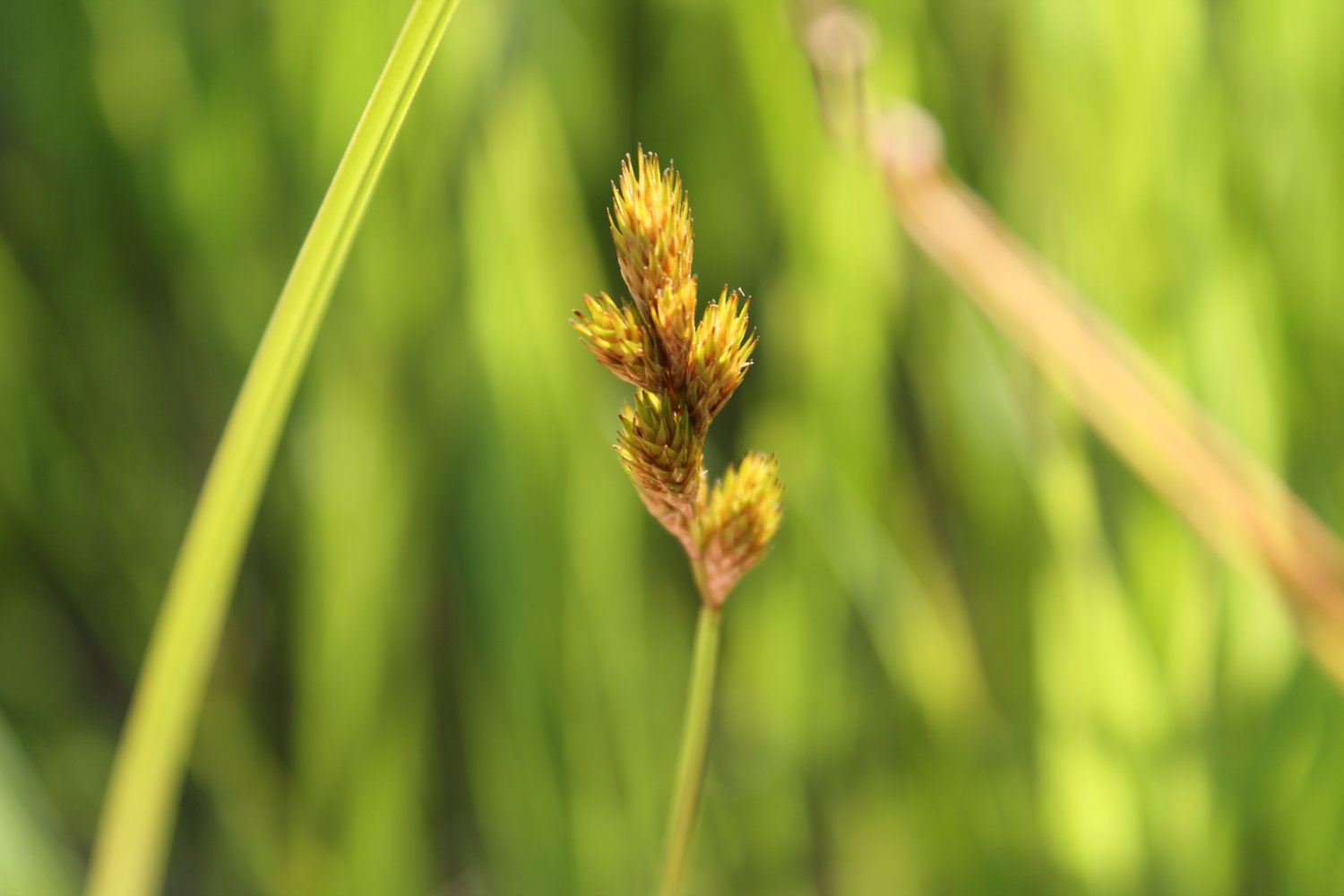
Bebb's sedge
Carex bebbii
Cool season, tufted, native perennial grasslike. Occurs in wet meadows, streambanks, ditchways and saturated soils from low to mid elevations. May mimic an annual by maturing and flowering in its first growing season. Increases with disturbance. Good palatability to livestock and wildlife. Useful for wetland and riparian restoration.
- Growing Region: Midwest, Southeast, Pacific Northwest
- Blooms:
- Life Form: Grass
- Application Type: Agricultural Conservation, Erosion Control, Habitat Restoration, Land Reclamation
- Height: 1-2 ft
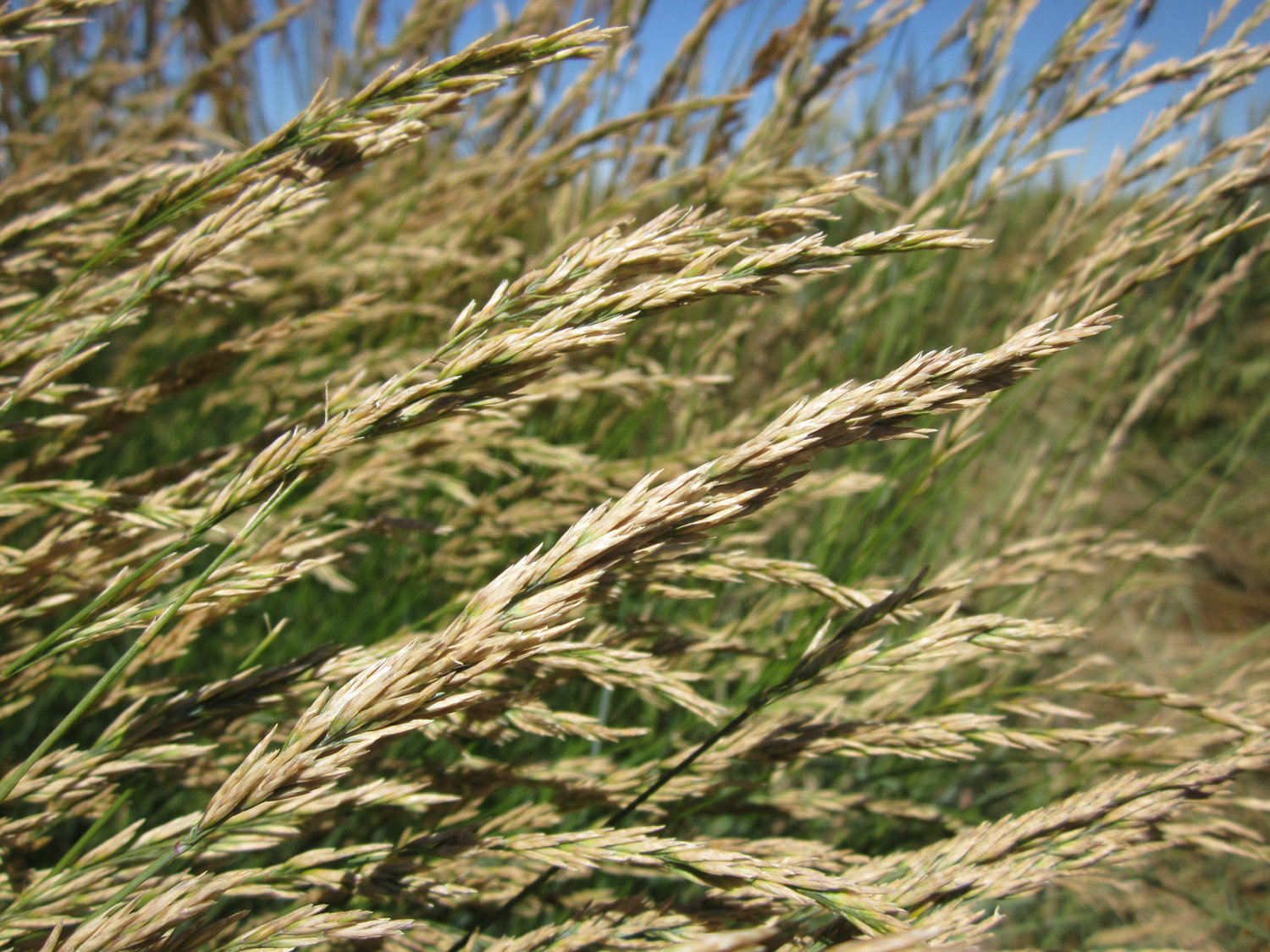
Big bluegrass
Poa secunda ssp. ampla
Formerly Poa ampla. Robust, Cool season, perennial bunchgrass with a shallow fibrous root system, sometimes spreading by short rhizomes. Occurs on a variety of sites but is intolerant of poorly drained soils or high water tables; drought tolerant. The most robust of the native bluegrasses. Early spring green-up and excellent forage production. Found in sagebrush communities, meadows and openings in aspen stands. Excellent palatability to livestock and wildlife year-round. Seeds valued by birds and small mammals.
- Growing Region: Pacific Northwest, Intermountain West
- Blooms:
- Life Form: Grass
- Application Type: Agricultural Conservation, Forage & Pasture, Habitat Restoration, Land Reclamation
- Height: 1-2 ft
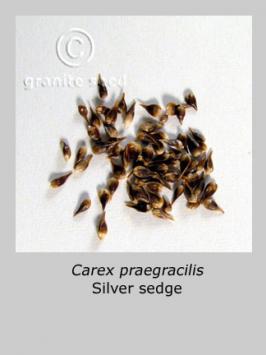
Blackcreeper sedge
Carex praegracilis
Cool season, native perennial grasslike with aggressive black rhizomes. Occurs in seasonally moist wetland areas and prairies, from low elevations up to 10,000 ft. Adapted to fine, medium and coarse alkaline and serpentine soils. Highly palatable to livestock and wildlife and tolerant of grazing and trampling. Useful for riparian and wetland reclamation. Occasionally used as a low maintenance lawn, requiring little mowing and irrigation and able to withstand foot traffic.
- Growing Region: Intermountain West, Southwest, California
- Blooms:
- Life Form: Grass
- Application Type: Agricultural Conservation, Erosion Control, Turf, Commercial Beautification, Habitat Restoration, Land Reclamation
- Height: 1-2 ft
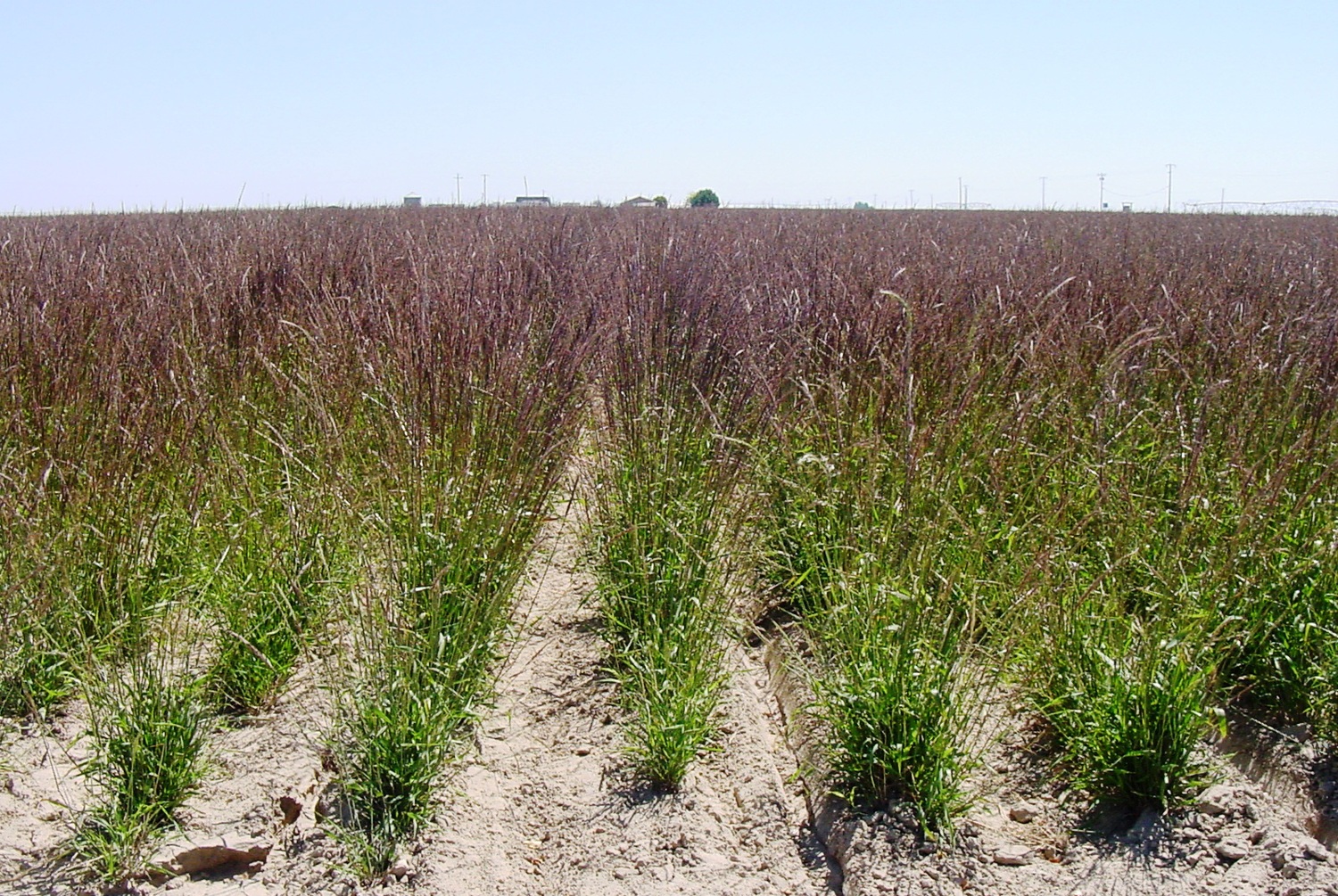
Blue wildrye
Elymus glaucus
Cool season tufted perennial bunchgrass which is highly desirable for use in erosion control seedings. Commonly found thriving in moist meadows, woodlands, or forests at mid elevations throughout its range. This species’ attractive, bluegreen foliage adds value to commercial landscaping projects where slope or site stabilization is needed. Cool season, tufted, perennial bunchgrass which is highly desirable for use in erosion control seedings. Commonly found thriving in moist meadows, woodlands or forests at mid elevations throughout its range. Shade tolerant. Attractive, blue green foliage adds value to commercial landscaping projects where slope or site stabilization is needed. Short-lived but readily reseeds itself. Varieties listed below.
- Growing Region: Pacific Northwest, Intermountain West
- Blooms:
- Life Form: Grass
- Application Type: Agricultural Conservation, Erosion Control, Turf, Commercial Beautification, Habitat Restoration, Land Reclamation
- Height: 4+ ft
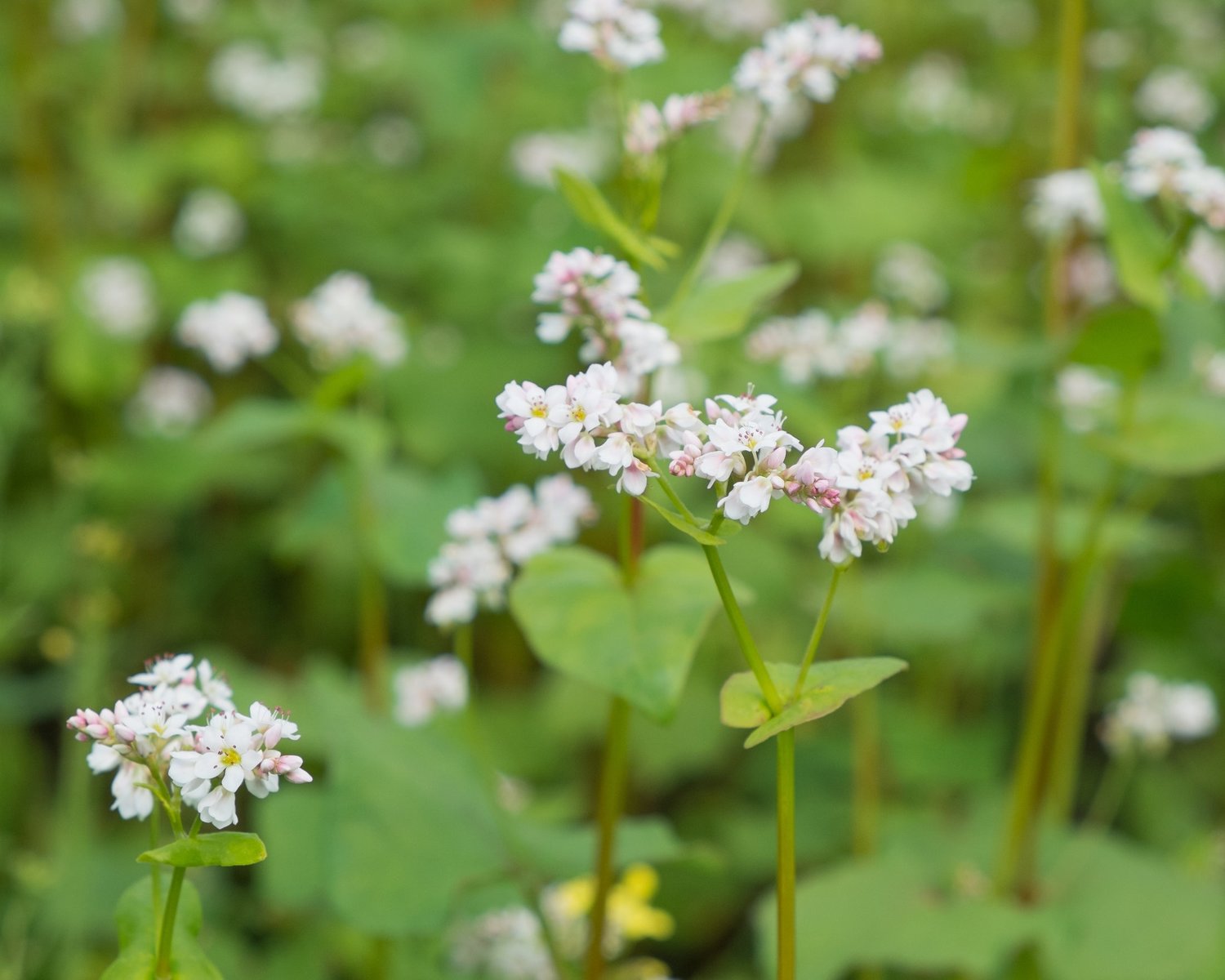
Buckwheat
Fagopyrum esculentum
Warm season, annual broadleaf traditionally cultivated as a pseudo-cereal. Prefers light to medium textured, well-drained soils; tolerant of low-fertility. Intolerant of frost, flooding or severe drought. Establishes and matures quicker than all other cover crops, forming a dense canopy and suppressing weeds. Use in double cropping systems, to prevent erosion, improve soils, disrupt root pathogen cycles, conserve soil moisture or as green manure. Hay has low forage value. White flowers attract beneficial insects and are excellent for honeybees.
- Growing Region: Midwest, Pacific Northwest
- Blooms:
- Life Form: Forb
- Application Type: Agricultural Conservation, Cover Crop
- Height: 4+ ft

California Barley
Hordeum brachyantherum
Cool season, tufted, perennial bunchgrass is moderately alkaline and saline tolerant, and broadly adapted to various soils types. Best adapted to moist sites and tolerant of periods of shallow standing water, but is also summer-drought tolerant. Typically medium-lived but short-lived on drier sites. Excellent seedling vigor and quick growth. Important species to riparian areas, wetlands, meadows, forest openings, salt marshes and ocean beaches from sea level up to 11,000 ft. elevation. Rarely dominates, eventually yielding to longer-lived, more persistent species. Useful as a quick cover and nurse crop in habitat restoration mixes. Palatable to herbivores in the spring and can be used in dryland pasture at high elevations.
- Growing Region: California
- Blooms:
- Life Form: Grass
- Application Type: Agricultural Conservation, Erosion Control, Habitat Restoration, Land Reclamation
- Height: 1-2 ft
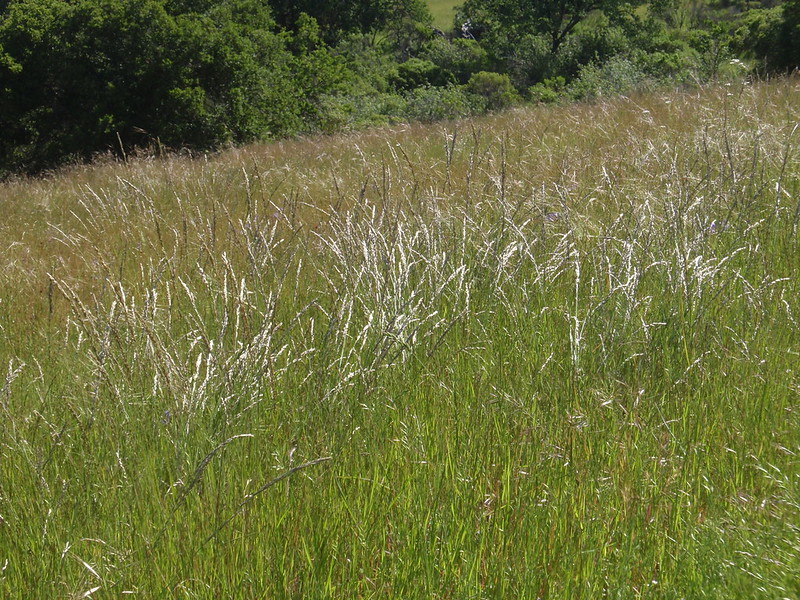
California Melic
Melica californica
California Melicgrass is a perennial bunchgrass that grows between 1 to 3 feet tall. It is used in native landscaping for its drought tolerance and ability to grow in various habitats. This plant prefers full sun and is commonly found in woodlands and chaparral.
- Growing Region: Midwest, Southeast, California
- Blooms:
- Life Form: Grass
- Application Type: Agricultural Conservation, Cover Crop
- Height: 1-3 ft